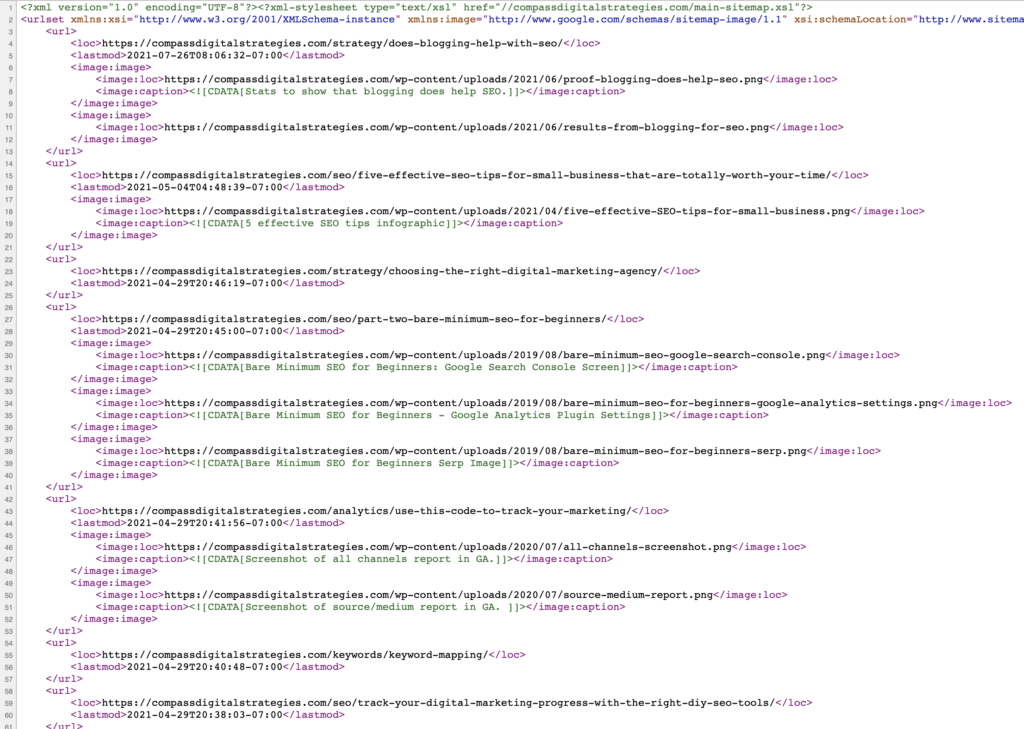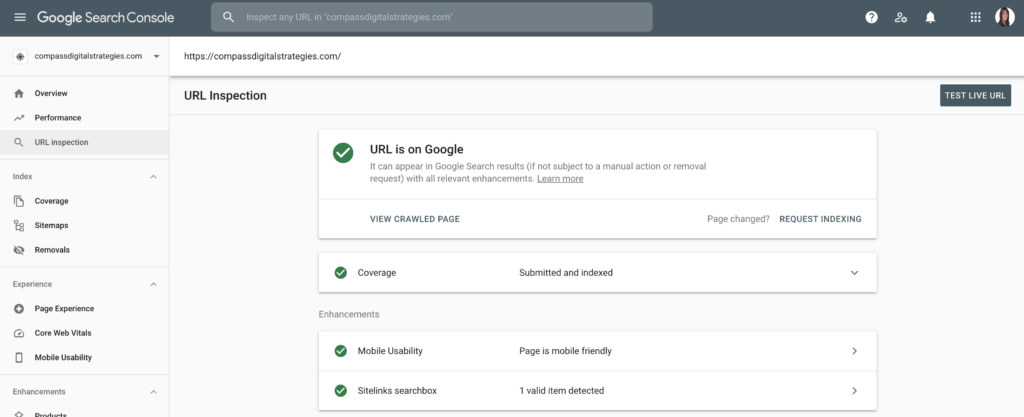The most useful bits of Google Search Console and how they fit into your business’ SEO strategy
Google is great at delivering platforms that give you all sorts of useful information about your website’s search performance. Between Google Analytics and Google Search Console (formerly known as Google Webmaster Tools) there isn’t much you can’t find out about who’s looking at your site, for how long, and how they move around it.
Unfortunately, if you’re new to this SEO landscape then all the information and metrics it provides can seem quite overwhelming. So in this article I’m going to cut through some of the Google Search Console (GSC) jargon, and tell you about the seven GSC metrics that will help you the most in your day-to-day SEO management.
What is Google Search Console?
GSC is a free service from Google that lets site owners, developers, administrators, content marketers, and SEO strategists see how a website is performing in Google Search results. By using this information, you can make changes to a site so it becomes more Google- and user-friendly, and perform better in search.
How GSC helps your SEO efforts
What follows are the six GSC functions I use most often when analyzing my client’s sites and optimizing their performance.
Submitting sitemaps
Visible pages
Average page position
Clicks
Number of impressions
CTR
1. Submitting sitemaps
A sitemap shows the Google bots how your site is structured. Here’s the Compass Digital Strategies sitemap so you can see how they look.

While it may look a little bit pedestrian (and nowhere near as attractive as your actual site), it lays everything out plainly and clearly so Google can understand your site structure. It tells the bots what pages are linked to other pages, the page hierarchy, the metadata, and even how often your site is updated with fresh content.
You don’t need to keep uploading your sitemap to GSC every time you add a page or post. Google is very advanced, and most sites can perform well in search even if they don’t have a sitemap. But it does speed up how quickly Google reads and understands your site, which can help with your rankings.
2. Visible pages
These are the pages that the search bots can see, and that will appear in search results. On most web building platforms—and certainly in WordPress—you can choose whether you want a particular page, image or video on your site to be found by the bots. This is called ‘page indexing.’ You index the pages you want found so Google can easily rank them. But you wouldn’t index pages you don’t want found, such as your 404 error message page.
A good way to determine whether you should index a page or not is to think about the user journey. If this was the first page someone saw from your site, and they knew nothing else about your business, would it give them the right impression? Will they find it helpful or confusing? If it’s the latter, make sure the page isn’t indexed.
When pages should be visible but don’t show up
Pages don’t always index correctly. Google may decide a page isn’t useful enough to be included in its search results. The most common reasons for Google not indexing a page is there’s not enough content, or the content is duplicated elsewhere. To fix the problem you need to adjust the page. This may involve adding more content (but make sure it’s still relevant to the topic), or rewriting paragraphs that have been copied from other pages on your site.
Once you’ve made the changes, ask GSC to reindex the page by:
- selecting the ‘URL inspection’ option in the left-hand menu
- pasting in the URL you want indexed
- selecting ‘REQUEST INDEXING’ in the bottom right corner of the box.
Easy.

3. Average page position
Organic search isn’t static. A page ranking on page one or two of Google one month can drop to page three or four the next. GSC’s Average page position metric tells you roughly which page of Google you can expect to find your site or content.
Calculating the average position is complex. It considers not only the top to bottom results we’re all familiar with, but also where the link may have appeared in any sidebars, snippets or rich results. There’s been some debate about how accurate the average position metric really is. But getting a simple overview of how a site or page has performed over time can be really useful—especially if you’re testing.
4. Clicks
Clicks are exactly what they sound like. It’s the number of times a URL is clicked from organic Google search results. This metric tells you what URL, and therefore which keyword(s), are driving the most organic traffic to your website.
5. Number of impressions
An impression is when a URL appears organically (instead of from a paid ad) in the page of search results. We call this “being seen”, but ironically the person doesn’t need to scroll down and actually see the URL on the search results page for it to register as an impression. (They don’t have to click the link, either. That metric is covered in the click through rate, which I’ll discuss in a moment.)
Seeing a high number of impressions for a URL is a good sign. It means Google likes what you’ve got on the page, and wants to include it in the results. But it’s only useful if you can turn those impressions into clicks.
6. Click through rate
It’s a good idea to look at a URL’s impression and click through rate (CTR) data simultaneously. Showing up in the search engine results pages (SERPs) is half of the battle. Getting people to click the URL is the other half, which is why these metrics work so well together.
Click through rate is a calculation.
Number of clicks / number of impressions x 100 = CTR
You can use CTR to judge how effective your page titles and descriptions are.

The more enticing these pieces of text are, the more likely someone will click. Seeing a page with lots of impressions and a high CTR suggests it’s ticking all of Google’s boxes. But if GSC shows the page as having lots of impressions but a low CTR, you may need to try a different meta title and description.
The opposite is also true. If you see a page with a low number of impressions but a high CTR, it might be worth looking at how to optimize it to catch the attention of the Google Gods.
Getting started with GSC
While other SEO tools can give you the same information you’ll find in GSC (and many offer a deeper analysis), GSC is by far the easiest to use. It’s also free (all you need is a Google account), and once you’ve signed up you can register your site in 10-15 minutes.If you’re DIYing your SEO, head to getting away with bare minimum SEO (part one) where I talk more about GSC and other simple tools you can use to track your SEO efforts.

